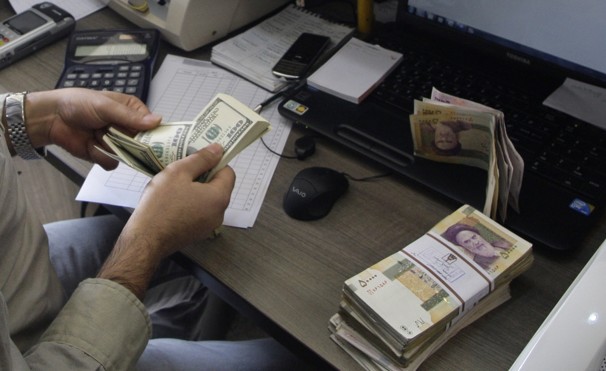Iran 1st-Hand: How the Currency Crisis Began (Chenar)
 Ali Chenar writes for Tehran Bureau:
Ali Chenar writes for Tehran Bureau:
The first sign of trouble appeared in the gold market. There has always been a strong demand for gold and gold coinage in Iran, as Iranians have traditionally saved in the precious metal. "I never lose money buying gold," said Simin, a 50-year-old retired teacher and mother of four grown children. "Even during the war, I registered for Bahar-e Azadi coins [the Islamic Republic's official gold coins]. They are easy to hide and easy to trade. When I need cash, all I need to do is go into the first jewelry store and sell them at market price." Few became alarmed as gold prices began to increase in Tehran; after all, the gold market was on the upswing globally. According to an economist at the Central Bank of Iran (CBI), "Gold was rising everywhere, and it was only natural to see prices increasing in Tehran. Although sometimes the price of gold in Tehran was more expensive than its price in the global market, sometimes it was lower."
But as the price of gold continued to climb, many more started to invest in it. Laleh, a 32-year-old artist and designer, was one. "I used most of my savings to buy gold in the summer of 2010," she said. "Since then, it has gained almost 50 percent in value." That sort of return, which few investments can hope to offer, triggered even greater demand. As demand shot up, the CBI tried to stem it. Central Bank President Mahmoud Bahmani announced on several occasions that there was enough gold for everyone. These proclamations seemed only to fan the flames. Finally, last May, the CBI announced that it would sell no more than five Bahar-e Azadi coins to each citizen; the transaction would be noted in their national ID cards. This too failed to restrain the market, and prices kept rising. People began to queue in long lines to purchase their five coins. Entrepreneurial types were on the scene too, hiring others to stand in line for them. "Renting someone," as the practice came to be called, became very common and the term entered everyday parlance.
At one point this past December, Khabar Online, a news website associated with economic conservatives, reported, "The price for one's place in the line is up to 40,000 tomans" -- 400,000 rials, or $35 at the time. Banks currently sell each gold piece at 60,000 tomans below market price. "One can make up to 300,000 tomans by staying awake and standing in line for the whole night," Noosha, an accounting major, told me. "See, it is easy to make money. Who needs a job in this country?" She said that she and her mother had made about three million tomans in this fashion.
But it had its dangers. "When the bank employees tried to close the doors, yelling 'tamoom shod' [sold out], people would yell back 'na, nashodeh' [no, it's not]. Then the people closest to the door would start to fight and beat each other up," she said, describing the tense atmosphere. There were stories of people getting stabbed in these quarrels.

 Wednesday, January 11, 2012 at 9:02
Wednesday, January 11, 2012 at 9:02
Reader Comments